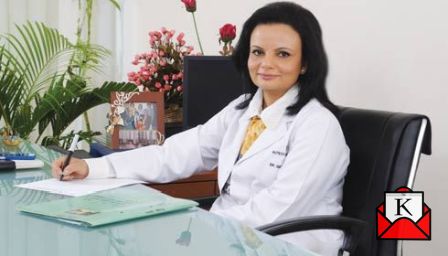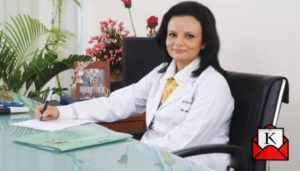Guest Blog: New Study Reveal Treating Down’s Syndrome with hESC Therapies Possible


Prakhar (name changed) was born preterm due to premature rupture of membranes (PROM) and was kept in intensive care unit (ICU) for 2 days due to respiratory distress. As the baby was diagnosed with Down’s syndrome at the time of birth and having subnormal understanding and motor skills, he was taken to the Nutech Mediworld for treatment. The patient’s first visit to the hospital was at the age of 2 months. The baby was admitted with chief complaints of delayed milestones, lack of voice, cardiac defects, slanted eyes and with no neck holding capacity.
“The patient underwent two sessions of hESC therapy of which the first session lasted for approximately 3 months. By the end of 3 months, the muscle tone was better in all limbs. He had started babbling and crawling. He was social and was able to recognize his near ones after the 1st session. Better outcomes were observed with no adverse events (AE) reported. Work done by Dr Geeta Shroff on Stem cell transplantation proves that it is a promising technology that has the potential to replace damaged neurons, reestablish lost axonal connections, and provide treatment for various neural and congenital disorders. Embryonic stem cell lines used by her have been derived from a single spare fertilized egg that donated during a IVF cycle. This fertilized egg would have otherwise would have been medical waste.
The clinical outcomes of a Down’s syndrome patient treated with hESC therapy at Nutech Mediworld were remarkable and exclusive as hESCs have not been used previously in clinics for treating Down’s Syndrome. About 50% of all babies born with Down syndrome are also born with a congenital heart defect.
The hESC therapy has successfully treated patients with spinal cord injuries, diabetes, neurological disorders, Parkinson’s disease and even genetic disorders, amongst others,” said Shroff in a statement.
According to Dr Shroff, the hESC therapy may be the key to treating most of the known ailments and to reduce suffering.
Dr Shroff, who claims to have treated over 1400 patients so far with no side effects, has over 40 research papers published in reputed journals in different parts of the world.
She has patents in over 67 countries, including the US, Singapore, Japan, Australia and New Zealand, regarding the technology and its therapeutic application.
Down syndrome has been the most common chromosomal disorder since 1970. Each year, about 6,000 babies are born with Down syndrome, which is about 1 in every 700 babies born in India. And the number of babies born with Down’s Syndrome has increased by about 30% since 2007. The prevalence of Down’s Syndrome increases as the mother’s age increases. Older mothers are more likely to have babies affected by Down’s Syndrome than younger mother.
The uniqueness about the cell line derived by Dr Geeta Shroff makes it exclusive and usable for treatments of many disorders. Cell-based therapies have recently been sought for the treatment of Down’s Syndrome.
Stem cells have the potential to communicate with other body cells released from the site of injury. And as published in their previous publication hESCs induce normal neurogenesis in the brain, correcting the abnormal functioning, thereby, improving the overall condition of the Down’s Syndrome patient.
This is the first study to report the use of hESC therapy in a patient with Down’s Syndrome. Though beneficial, this investigation needs further research in order to understand the clinical utility of hESC therapy in patients with Down’s Syndrome.
About the author- Dr Geeta Shroff
